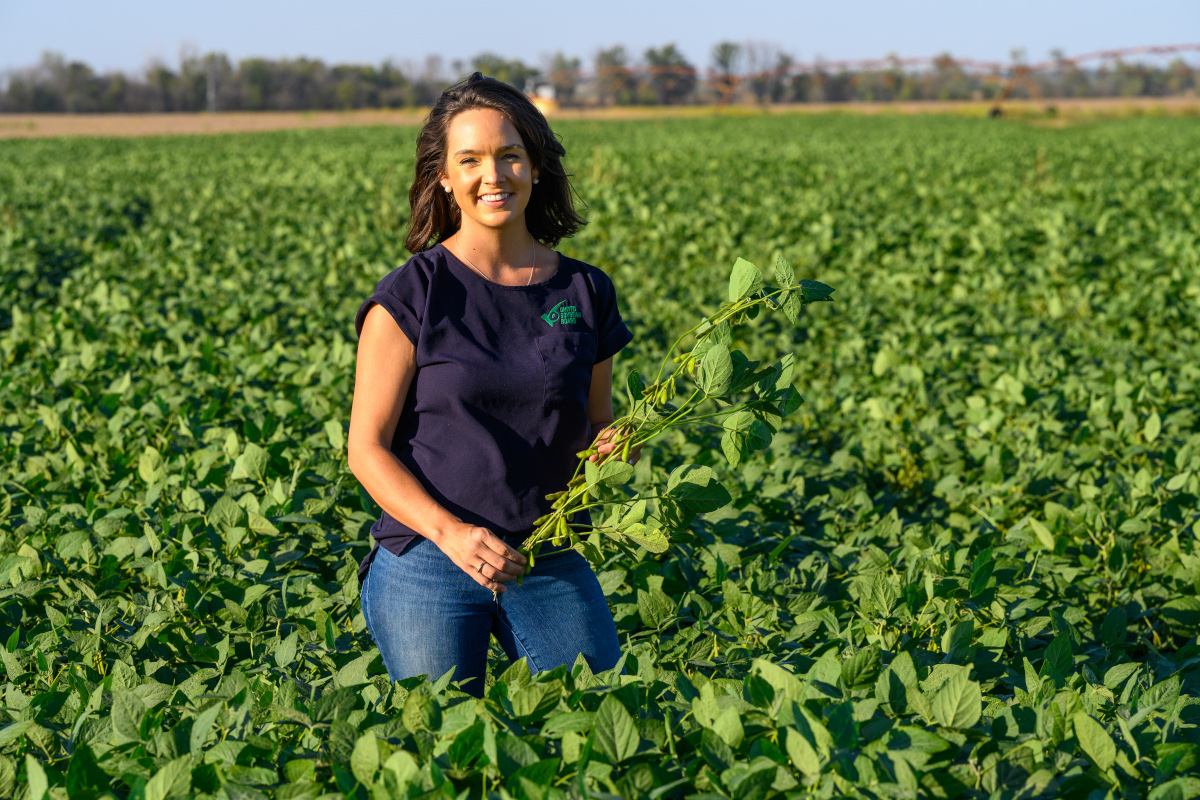U.S. Soy Staying Ahead of Food Fads

After 18 months and a lingering pandemic, it is easy to see there are changes in the way we purchase food. Biweekly trips to the supermarket have given way to online orders and contactless delivery. One expert believes the new trends won’t stop there.
COVID-19 triggered long-term changes in the food industry, and Phil Lempert, known as The Supermarket Guru®, says U.S. Soy is poised to capitalize on the trends. Lempert says to capitalize on the trends, farmers will also need to change the way they do business.
“It’s about the relationship,” he says. “Relationships with the shopper, the relationship with the retailers and the relationships with manufacturers. You need to be promoting the soy story to every one of these manufacturers. They are looking for new products with protein and health benefits.”
That was one message Phil Lempert shared with USB farmer-leaders during a session hosted by USB CEO, Polly Ruhland at a recent United Soybean Board meeting.
Lempert is an author and speaker who has dedicated his life to analyzing supermarket trends and consumer habits. In 1994, he founded SupermarketGuru.com, a leading food and health resource visited by more than 9 million people each year. Lempert makes regular appearances on shows such as NBC’s “Today.”
“There are only two points in the system where new material enters the soy chain,” Ruhland says. “One is you, the farmers, of course. The other is where money enters the system. Money really only enters the system at one point — at the consumer level. So if farmers want to make money, it’s a good idea to understand what consumers want and what consumers are thinking.”
Bolstering Soy’s Reputation
Lempert believes the work by the soy checkoff to brand U.S. soy has positioned farmers ahead of unstable fads and positioned the protein to be part of a long-term trend.
“You are on the mark,” he says. “The wind is at your back. Don’t forget that. The most important thing to look at is the difference between trends and fads.”
For Lempert, trends are long-lasting and explainable. Alternatively, fads are spur of the moment and fade quickly.
“Think sea monkeys from comic books,” he says. “That’s a fad. Fads make headlines quickly, and they fade just as quickly.”
Trends have multiple brands and consumers across all ages and ethnic groups, Lempert says.
“There is no crop more important than soy when we look at the land, the soil, the air, the water,” he says. “You really need to pat yourselves on the back. You have a miracle product that you are growing from a health standpoint and from a planet standpoint. You should be very proud of what you grow and being out there to tell the world.”
Responding to Shifting Consumer Preferences
What is the future of the supermarket? Lempert believes the pandemic produced changes that won’t soon disappear. Grocery stores will continue their sanitary measures to increase customer service. Shopping by appointment could become a reality to limit the number of customers in the store, and there could be scheduled times for elderly shoppers or shoppers with specific needs.
“The front half of the store is going to be fun,” Lempert says. “You can talk to Betty, the baker or the butcher. All of the fresh produce and bakery items will be available for you to choose, and it’s going to cut down on your time in that store.”
He says the back of the store will have prepackaged items — think staples — that you choose before visiting the store and will be ready for your purchase. That is a change from the inefficiencies of the current model, he says.
“To find a handful of items today, you have to walk past 40,000 products,” he says. “That’s not very efficient.”
Lempert calls plant-based foods an emerging trend but emphasizes it will be essential to dispel the misinformation for soy to capitalize on the momentum.
“There’s a lot of confusion about soy,” he says. “What we need to do is capture those misconceptions from shoppers and correct them. After we cross off the first three misconceptions, let’s look for another three things. This is a 365-days-a-year job.”
Lempert says understanding the consumer is crucial for success. Finding the wow in soy and telling consumers that story will make it the preferential ingredient in many products.



